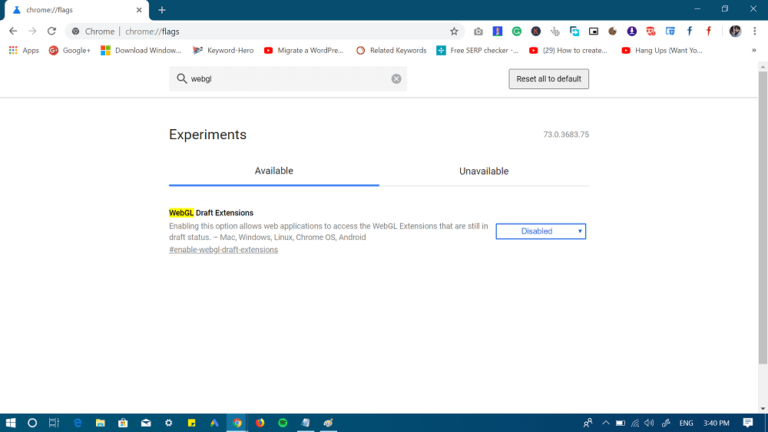

If it is already disabled, then WebGL is already turned on. If the option is enabled, you have to disable it if you want to turn on WebGL. On the other hand, the web applications have full access to the WebGL API when this option is disabled. (Note: When this option is enabled, the web applications cannot access the WebGL API. Step-3: Navigate down the list of ‘ Experiments‘ and find out the ‘Experiment’ with the title ‘ Disable WebGL‘. If you see something like 8192, ANGLE is likely enabled because 8192 pixels is the max size of a texture with Direct3D 9.Step-2: Type ‘ chrome://flags/‘ in the URL field and hit ‘ Enter‘. With recent desktop OpenGL implementations, the max texture size is 16k or 16384 pixels. Jump at the end of the page in the Miscellaneous section and you should find the ANGLE status:Īnother way to check the native OpenGL support is the max texture size (or max viewport size). Now how to check that ANGLE is disabled? Just use this WebGL Browser Report app. Unlike Firefox, you need to close all Chrome instances to enjoy the new setting. Just edit the Chrome shortcut and change the Target value: In Chrome, you have to add the following command line parameter: –use-gl=desktop. And by default, webgl.disable-angle is set to false: native OpenGL is not used. In recent version of Firefox, the webgl.prefer-native-gl variable has been replaced by webgl.disable-angle. The nice thing with Firefox, is that the new setting is immediately operational. In Firefox, just set the webgl.prefer-native-gl variable to true in the about:config page: If, for some reasons (for some Shadertoy demos for example), you want to use real OpenGL draw calls, you can enable native OpenGL in Firefox and Chrome. ANGLE is an implementation of the OpenGL ES 2.0 specification that is hardware-accelerated via Direct3D 9.


By default, both Firefox and Chrome use the ANGLE layer to render WebGL draw calls under Windows.


 0 kommentar(er)
0 kommentar(er)
